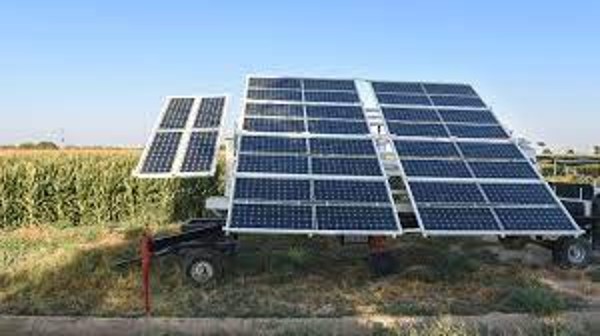The Ministry of New and Renewable Energy (MNRE) has introduced amended guidelines for implementation of the Pradhan Mantri Kisan Urja Suraksha Evam Utthaan Mahabhiyan (PM-KUSUM) programme. In a recent update, extensive guidelines have been issued, replacing the prior memorandum dated July 22, 2019, and integrating all subsequent amendments. A brief summary of the comprehensive implementation guidelines of the scheme…
The goal of Component A is to enable farmers to install 10,000 MW of decentralised ground or stilt-mounted grid-connected solar power plants, or other renewable energy-based power plants, on their land. The renewable power generators (RPGs) will establish these plants, featuring capacities ranging from 500 kW to 2 MW, within a five-km radius of substations. This placement is intended to reduce transmission costs and losses. Farmers have the option to either install these plants on their land individually or engage in partnerships with groups, cooperatives, panchayats, or other organisations. Under mutually agreed-upon lease terms, the scheme permits farmers to lease their land to distribution companies (discoms), functioning as RPGs. Discoms will evaluate and inform about the renewable generation capacity that can be integrated into substations of rural areas. Under decentralised renewable energy category, the generated energy will contribute towards fulfilling the renewable purchase obligation by the discom. The power procurement will be executed at a pre-established levelised tariff, and in cases of excess capacity applications, a bidding route will be employed. A model land lease agreement is also included in the scheme for streamlining transactions between farmers and discoms. With respect to connectivity, the chosen RPG will be tasked with installing a dedicated 11 or 33 kV, 66/11 kV, or 110/11 kV line from the renewable energy power plant to the substation. This includes the construction of a bay and the necessary switchgear at the substation where the plant is linked to the grid, and metering activities are performed. The state implementing agency will collaborate with the state or union territory (UT), discom, and farmers to execute the scheme.
Within Component B, individual farmers will receive assistance to install standalone solar agriculture pumps or replace existing diesel agriculture pumps or irrigation systems in off-grid areas where grid supply is unavailable. Small and marginal farmers, particularly in off-grid regions, will receive financial aid from both the central and state governments, in addition to loans from banks. Pumps with capacities exceeding 7.5 HP may be permissible, but the central financial assistance (CFA) will be restricted to the subsidy applicable for a 7.5 HP pump. Individual farmers in the north-eastern region, hilly region such as Jammu & Kashmir, Ladakh, Uttarakhand, and Himachal Pradesh, and Islands such as Andaman & Nicobar, Lakshadweep, can avail the CFA for pumps with a capacity of up to 15 HP. However, the CFA for pumps up to 15 HP will be limited to 10 per cent of the total installations. Discoms, agricultural department, minor irrigation department, or any other department assigned by the state government will act as the implementing agencies for this component. There are two ways to implement Component B: with State share and without state share. The guidelines outline the structure of CFA, enabling farmers in designated regions to request solar pumps with the central subsidy only through a national portal.
The Component-C centers on the solarisation of solar power into grid-connected agricultural pumps, providing reliable solar energy to farmers during the daytime. This component encompasses both individual pump solarisation (IPS) and feeder level solarisation (FLS). IPS enables farmers to utilise excess solar power and sell it to discoms, thereby boosting income and encouraging water-saving practices. FLS entails the integration of solar power into agricultural feeders, encouraging the efficient utilisation of solar energy. The generating companies, discoms or any other department designated by the state government will serve as the implementing agencies. The guidelines underline the distribution of CFA depending on benchmark costs or tender costs and suggest the use of GPS surveys to ensure precise calculations of feeder load and distribution loss.
The guidelines delineate the procedural elements, financial incentives, and timelines for the effective execution of the plan. They underscore the collaboration of state implementing agencies, discoms, and farmers in a concerted endeavor to attain the ambitious objective of incorporating 34,800 MW of solar capacity by March 2026, with the CFA support of Rs 344.22 billion.












